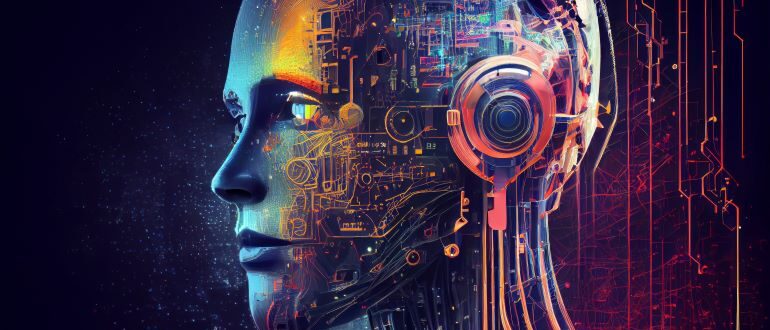
Generative artificial intelligence (GenAI) has come to be one of the most disruptive technologies to have emerged since the internet. GenAI hit the mainstream in 2022 with the introduction of OpenAI’s ChatGPT. Since then, it has exploded onto the business scene. A McKinsey report finds that 65% of American companies today leverage GenAI, compared to just 33% in 2023.
In just a few years, the technology has redefined business markets across industries – from healthcare to retail and manufacturing to technology. But, with opportunity comes potential risk. For GenAI, these concerns range from ethical implications and job displacement to intellectual property challenges. As adoption peaks, organizations are now racing to develop guidelines around responsible use, and equip employees with the necessary skills to avoid job displacement.
Proactive strategies such as these that consider the benefits and risks of GenAI ensure that the technology and organizational goals are fully aligned, and that the future of companies and those of the employees are safeguarded.
GenAI is Everywhere, All at Once
GenAI automates time-consuming, tedious processes, offers personalized experiences, and frees up human talent to deliver higher-value work. Right now, GenAI for enterprise use is only in its infancy. In a study of 4,500 businesses by ServiceNow and Oxford Economics, researchers found only a small percentage had fully infused the tech throughout their operations. These “pacesetters” use GenAI and related tools to streamline workflows, manage and visualize data, and revolutionize customer and employee experience with personalized, AI-powered interactions.
GenAI is also credited with saving lives through its application in medical diagnostics and research. And as the technology matures, use cases will become even more innovative and impactful.
But it’s crucial for employers leveraging GenAI to consider how to use a still-developing technology ethically. Mitigating potential bias in how the tool is programmed, and navigating privacy issues as employee prompts are stored in GenAI-powered systems are big steps in that directions.
As GenAI transforms how work gets done, it is forcing many organizations to confront employee skills gaps and driving up job displacement in some professions, such as customer service.
Where GenAI is Headed
GenAI is becoming a mainstay in companies and those that aren’t effectively incorporating it is going to get left behind. A McKinsey research found that GenAI could automate tasks that currently comprise nearly 70% of the average employee’s day, a productivity boost that could give employers the competitive edge they need in the fast-paced business world.
GenAI-driven productivity will have a measurable impact on the bottom line. McKinsey predicts that the tech will infuse the global economy with $2.6-$4.4 trillion annually from productivity savings. The most innovative GenAI users are already reaping these rewards. According to a research by ServiceNow, about one-third of pacesetters see an average return on investment (ROI) of at least 15% from their tech investment.
To claim a slice of that growth, however, organizations must incorporate GenAI strategically. That involves identifying use cases that align with business objectives and being open to reimagining the processes and workflows to accomodate the technology.
Above all, no technology project will succeed without proper employee training to use the tools. So, ensuring that employees are equipped with the skills necessary to leverage GenAI and providing opportunities to develop new skills as the tech changes jobs is equally essential. Underpinning this work is an investment in ethics: develop a governance framework to guide the responsible use of GenAI and consider questions about bias, privacy, and transparency at every turn.
How to Prepare Workforces
There is strong hesitance among many employees to adopt GenAI. Last year, the American Psychological Association found that nearly 40% of Americans are worried that AI will make their jobs obsolete.
There are certainly industries and professions where AI will automate some people out of work. But it’s not that reductive. Economist Richard Baldwin said it best: “AI won’t take your job; it’s somebody using AI who will take your job.”
As jobs become more infused with GenAI and similar tech, it’s vital for employees to keep pace. The solution to overcome employee resistance to the tech is for employers to lean toward transparency. No matter how comprehensive an organization’s tech integration strategy is, it won’t be sustainable unless leaders bring their workforce on the journey. This necessitates leaders to invest in upskilling and reskilling initiatives to connect employees with GenAI skills and teach them about the ethical and responsible use of the technology. Comprehensive skills assessments can aid leaders in pivoting their talent management plans to emphasize the adjacent skills employees need as GenAI redefines their work.
Preparing for the Future of Work
Technology that was once considered a figment of the future is here. GenAI’s capacity to create, ideate, and, most importantly, innovate, transforms how employees work and the very nature of work itself. Now, it is imperative that organizations strategize for the effective implementation of the technology, aligning use with business goals to drive a synergy that results in a strong competitive advantage in the digital age of today—and tomorrow.


